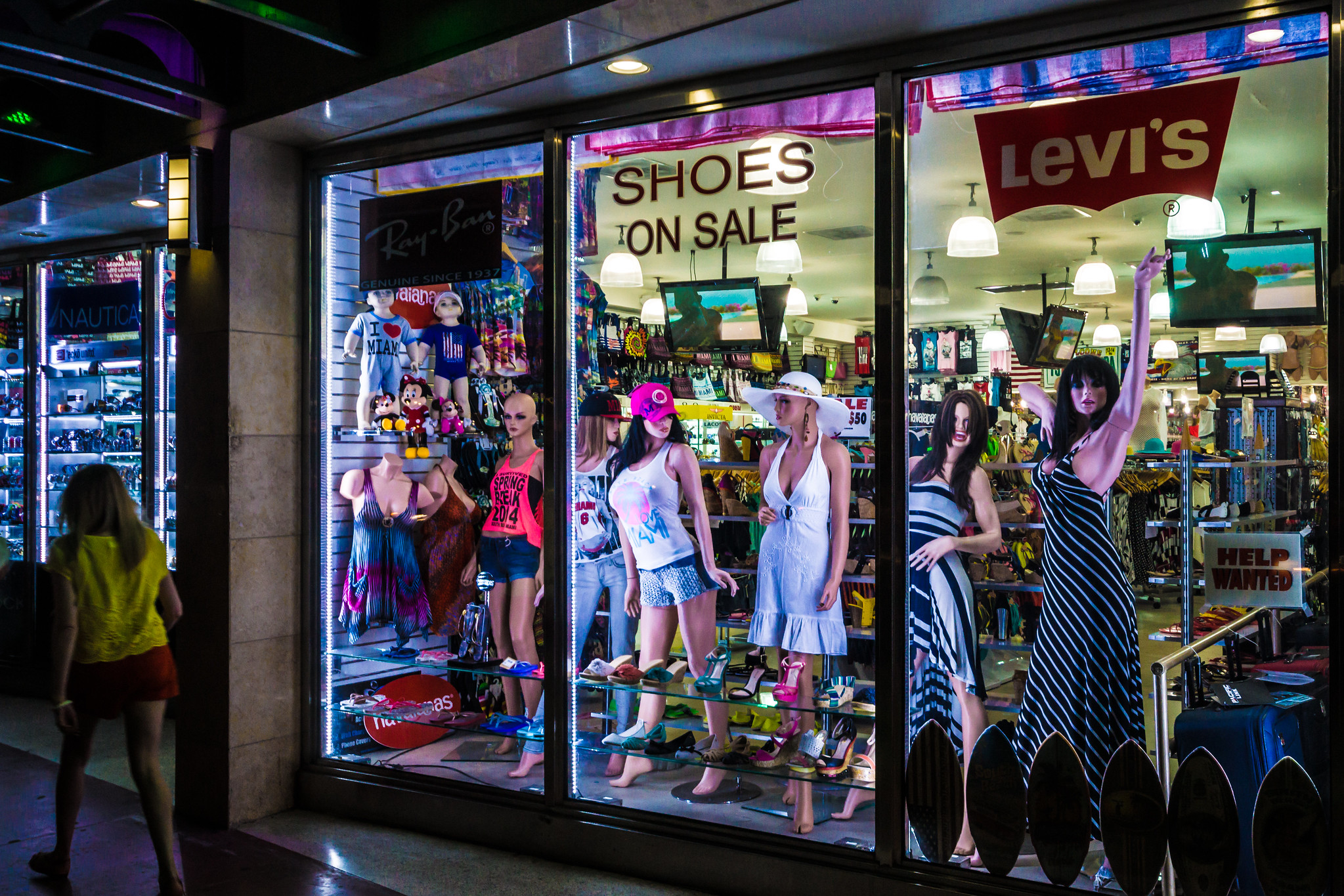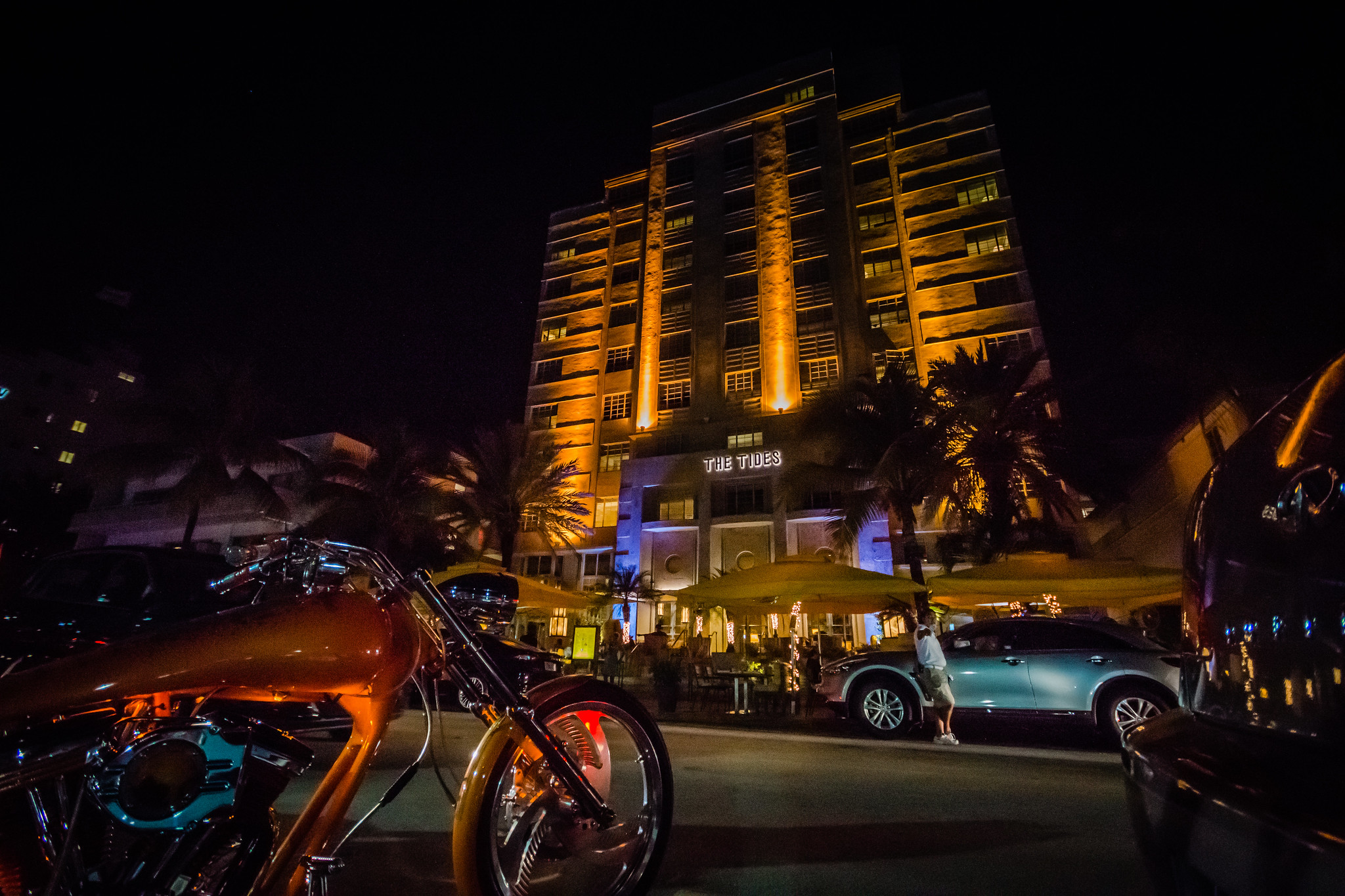
[Note: This is a graphically heavy page, and is best viewed on a large screen. As such, it may take a few moments to fully load.]
Prologue
Quite why it took me nearly five years to gather all this together, I couldn’t easily say. It may have been the 20,000 photos that needed editing down to a modest enough number, the 80GB of video shot, or the idea that I wanted to put it all together in something a little special.
In the end, I wanted the hard disk space back from my laptop, and to be able to archive everything properly, but even that wasn’t enough to spur me into action. It also probably wasn’t the fact that at 20,000 words, the length of this piece falls some way between an especially long blog post and a full-length book.
In fact, although I took some contemporaneous notes, the writing was relatively easy and at a distance came flooding back.
I’m not going to pretend that this is an eye-opening piece, with pages of insights into the psyche of Americans. But I think it’s something more than a somewhat grandiose “What I did on my holidays” essay. Yet I can’t claim that I’ve written some kind of state of the Obama-nation either.
It is what is, and that’s a travelogue that captures an essence of what I like about America while largely avoiding what I don’t like about it. I could probably separately write at length about the imbecility of the country’s lack of gun control, and the failure of its prison system, which comes into sharp relief during an election season. Nor am I writing about the abhorrent health service, only improved to a small extent by Obamacare, yet which leaves so many Americans without something most of the developed world would consider a fundamental human right. And I’m certainly not getting into the many and varied issues about race in 21st century America.
I’m not at all sure that I’d like to live permanently in the US. It’s fun to visit, but there are too many of these issues that prevent me from wanting to do that. Politically they’re broken (cf. this election season), and there are cultural shortcomings too.
Yet there are many good things about the country. It’s a friendly and hospitable place, particularly when you get beyond some of the big cities. With some exceptions the cost of living is remarkably cheap, while the standard of living is high. And the country is so vast that it’s not surprising that relatively few Americans ever travel overseas – their country is large enough that they have plenty within their own borders.
I can’t pretend that I’ve somehow seen the “real” America. I travelled from tourist site to tourist site, on a pretty tight schedule; I don’t think there was anywhere that I spent quite enough time. I was flitting about the place. I didn’t really get to know anywhere properly.
But perhaps this will give you a flavour of something, and enough humourous anecdotes to keep you reading all the way through – or at least to put some context to some of the photographs.
London to New York
18 March, 5.45am
It was the usual ridiculously early alarm call to make what at the time seemed like quite a reasonable 9.30am departure time. Except that you needed to back-time it all a bit. Allow two hours for check-in – “just in case”. Then how long does it take to get to the airport? Heathrow is a bit of a schlep from where I lived, but I decided to get a cab which are all fixed prices. So even though I booked a cab for 6.30am taxi , and I inevitably found myself sitting around waiting for it to arrive.
The cabbie asked me if I’m going somewhere hot. A combination of polar vortices and mild (but wet) winters meant that I answered in the negative. It would be very much colder in New York. Although New York was only the first part of my transAmerica drive. Well, I say “transAmerica,” but actually I had actually planned a three leg American holiday. After a few days in New York, I’d fly down to Miami and spend a couple of weeks to reach New Orleans. There, I would take a further flight to Los Angeles where I would end the trip taking in a big loop around California, Arizona, Utah and Nevada.
This presented a clothing problem, since the majority of my trip would be spent in warmer climes, although the Big Apple was still pretty chilly. On balance I was taking more pairs of shorts, and fewer fleeces.
At the check in, I decided I was a complete sucker. I was struggling to fasten the combination lock on my brand new suitcase – TSA approved, so American customs can rifle through my underwear if they like – when a tall attractive Virgin Atlantic assistant came over.
Had I checked in already?
“Yes, I did it online.”
Today they had a special offer to let me have extra legroom for just £30.
Long gone are the days when you could check in early to smartly nab the emergency exit row. Today, that’s a premium upsell. And this lady had looked at me and rightly suspected that I’d be up for it.
£30 wouldn’t be much to make nearly 8 hours more comfortable. So she logged on to a nearby terminal. But I’d already reserved a window seat, and the only extra legroom seat available was in the middle of the cabin, probably alongside the adults carrying babies who always seem to be seated there.I politely declined.
Perhaps I’d like to move up a cabin?
My immediate thought was that this would be way out of my price range. But I’m informed that it’d be an extra £249 to get into Premium Economy. To be honest, I had no idea if this was a good deal or not. I suspected it probably wasn’t bad compared to the price I’d have paid online. I hummed and hahed a little. But I decided against it.
I headed over to the check-in desk where an agent asked me to weigh my hand luggage.
Suddenly my assistant was back by my side. “How about £189?”
Still a lot – but it was much more comfortable.
OK. I’d do it. We headed to a different desk where she practically whispered the price to the lady behind the counter. I’m not sure if this was for my benefit or genuinely so that other passengers didn’t get wind of the “amazing” deal.
I’ve never really played the airlines’ loyalty scehemes game. I just don’t fly enough, and I tend to look out for the best price rather than show loyalty to any particular airline. I do show disloyalty to a couple thought.
Airside, I discovered that Virgin seems to board passengers very early indeed. I thought I’d arrived at the gate early, but a good half the plane was already onboard, nearly an hour before the scheduled departure time. And because I was now flying Premium Economy I was fed and watered. They also didn’t seem so fussed about how heavy my hand luggage was now either (although on this occasion I knew it was within weight limits). Clearly you get more flexibility on such things depending on which part of the plane you sit in.
At first I was very happy with my upgrade. But that only lasted until the man in front of me reclined his seat to the maximum at his earliest opportunity, leaving it that way until the end of the flight. Why do I always end up behind the person who makes full use of that seat button? Glancing around at nearby seats, nobody else seems to be reclining their seats to that full extent.
Premium economy does get you more drinks than is average, although considering it was a 9.30am departure, I didn’t make maximum use of them. And we were given proper knives and forks to eat our meals with. No sign of the free paper though.
At JFK we were held back until Upper Class had left the plane, but I must admit that it’s easily the pleasantest arrival I’ve ever had in the US. There weren’t any snaking queues in the customs hall, and the guy who gave me a perfunctory interview seemed decent enough. When I explained that I was away on holiday for the better part of a month, he wondered what kind of employer gives you that much time off. I admitted that I no longer have an employer.
“After 17 years – I probably deserve this holiday.”
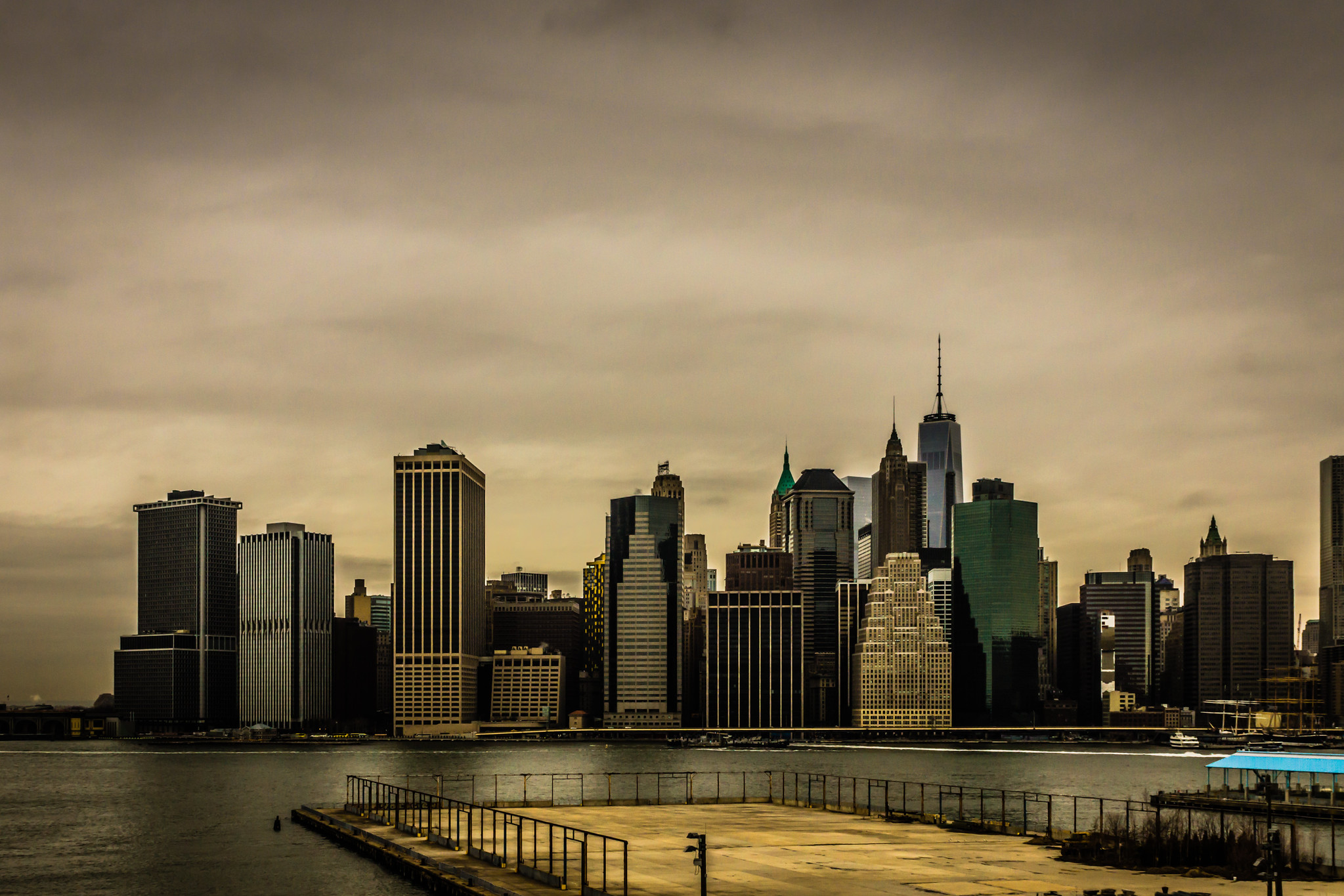
This was to be my big “between jobs” American road trip – less a gap-year and more of a gap-month. I was starting in New York before flying down to Miami, driving south to Key West and then all the way up and along to the Gulf coast until I reached New Orleans. From there it’d be another flight to Los Angeles, followed by a couple more weeks driving in a large loop before returning to LA and heading home. That was the plan, and it was fairly well set. Flights had been booked, but very little accommodation. The idea was to allow me plenty of flexibility in where I stayed. I planned on using the usual online booking sites to find hotels and motels as I went.
In JFK’s baggage hall, my bag was one of the first off the plane, so before you know it, I was in a cab and heading into Manhattan. The fixed cost is a bargain compared with jumping into a black cab in Heathrow. And no, I didn’t even think about Uber.
My cab driver was, like most New York cab drivers, an immigrant. I can’t place the accent, but I’d suggest eastern European somewhere. So I found it surprising that his radio station of choice seems to be broadcasting Rush Limbaugh.
I don’t know how a man can remain so angry on-air for so many hours every day. I was also not certain that my cab driver’s and Rush’s own takes on the US were quite aligned with one another.
But I couldn’t help but notice that Rush seems to have a lot of deals going on:
Need help with your tax returns? Rush has got a team who can help.
Want a discount on something? Enter the code “Rush” to get money off.
It’s all entirely legitimate I’m sure, and since it’s a syndicated programme, that’s part of the deal with this type of shows; the owners of the show get to sell their own sponsorship deals. In the UK we’ve still got a lot to learn about how Americans do sponsorship and product placement. I suspect that many presenters would feel uncomfortable lending the voices to the number of commercial deals Rush does.
I’d used Airbnb to book an entire apartment to myself. In the online ad, it was described as Chinatown, but Google Maps seemed to describe the area as the Lower East Side. When the cab driver reached the right street, it was pretty clear it is indeed Chinatown. And Chinatown in New York, it transpires, is somewhat bigger than the couple of streets around Gerrard Street that form Chinatown in London.
The cab driver was slightly perturbed that the requisite door didn’t seem to have a number, and a Chinese lady in a facemask seemed to be clearing garbage from somewhere out the front. I took it all in my stride and jumped out of the car. I left what I thought was a reasonable tip.
Someone was struggling to get in the entry door. This was odd as I’d been told the door was always open. Anyway, another lady opened it and then let me in. Not only is this Chinatown, but it seems pretty clear that all the residents are mostly Chinese, which probably makes the owner of my apartment one of the few in the block who isn’t.
I gained entry to the apartment, and was just entering WiFi details into my phone when my Airbnb host, Marc, arrived. He was here to change the sheets and give the apartment the once over.
It seems a couple of Finns had been the most recent guests – they’ve left some local chocolates for their host. He leaves them for me.
The apartment could have been cleaner, but for the money, it was fine for me. New York is just frighteningly expensive for accommodation, and there are some real fleapit hotels that still manage to bilk tourists. Airbnb really seems to have dented the market with a reported 16,000 listings for New York City.
We chatted about the Citi Bike scheme which mirrors the Boris bike scheme in London. Marc promised to lend me the key to his bike so that I can use them to get around the city during my days here.
But I wasn’t here to sit in apartments all day long; I needed to get out and look around. So it was off onto the streets for a long walk. There’s nothing like getting your bearings by slogging around a city on foot.
Although I’ve been to New York quite a few times, I didn’t know this part of Manhattan. Market Street in Chinatown is very close to the Manhattan Bridge and just a short walk from the Brooklyn Bridge.
My wander around was extensive, taking in the area around the Brooklyn Bridge and then heading about ten blocks north.
One of the things I spent a bit of time researching was how I was going to cope with communications in the US. The obvious choice was put my UK phone’s SIM into an old phone to receive any calls and texts from home, but for the most part not to use it – data was firmly turned off for the whole trip. I had a US T-Mobile SIM which I’d bought in advance online and would be relying on that for my trip.
This had lots of benefits. I could buy top-up vouchers in pretty much any pharmacy or supermarket, and that gave me lots of 4G data without paying hideous roaming charges. Even if your UK operator has some kind of roaming agreement, you can often find that the data you get roaming isn’t as fast as the locals get. Using a local SIM gets around this. You also end up with a US phone number, which makes life a whole lot easier when you’re booking accommodation and needing to supply phone numbers in situations where international ones simply don’t work.
That evening I met up with an old friend in a bar, and we caught up on things. She worked at SiriusXM, the giant US satellite radio group, running one of their stations. As such she gets to go to lots of gigs, looking for people that might be appropriate for her channel.
Once we’d had a few drinks and caught up, we headed on to a gig with a British band I’d never heard of. The venue was fairly packed, but we were on the guest list, staying for a drink or two and most of the set before leaving.
I’d been up for about 20 hours straight at this point, so bed was seriously calling.
Invariably if you fly west, your body clock is out of whack and you start to wake up early. Going to bed late helps stop this to an extent. Nonetheless, despite a long previous day, I was ready to get up at about 7.30am and was already sending emails by 8am.
It was a bit more overcast than the lovely blue skies we’d had the day before as I crossed the Brooklyn Bridge. For some reasons I’ve only ever previously managed to walk about half way across the bridge before shuffling back to the “safety” of Manhattan.
Little did I realise that Brooklyn Heights is a rather smart neighbourhood. Although before you reach it crossing the bridge on foot, you have to walk along a dull footpath in the central reservation of a dual carriageway at the Brooklyn end.
As usual, it seemed that all New Yorkers jog. Everywhere. All the time. You needed to keep your wits about you.
I sought solace in a Starbucks, although my plan to read the New York Time was thwarted by the upmarket branch having sold out. I was stuck with a USA Today. I’m a newspaper reader, and wherever I go, I try to read the local paper. That’s especially true if that “local” paper is New York’s local paper.
Out once again, I found the rather lovely view over the southern tip of Manhattan that is to be seen from the Brooklyn Heights promenade. And when I discovered that the subway was only a single stop from Wall Street, a lot of things began to fall into place very quickly. No wonder some of these apartment blocks seemed really nice. They probably cost a fortune.
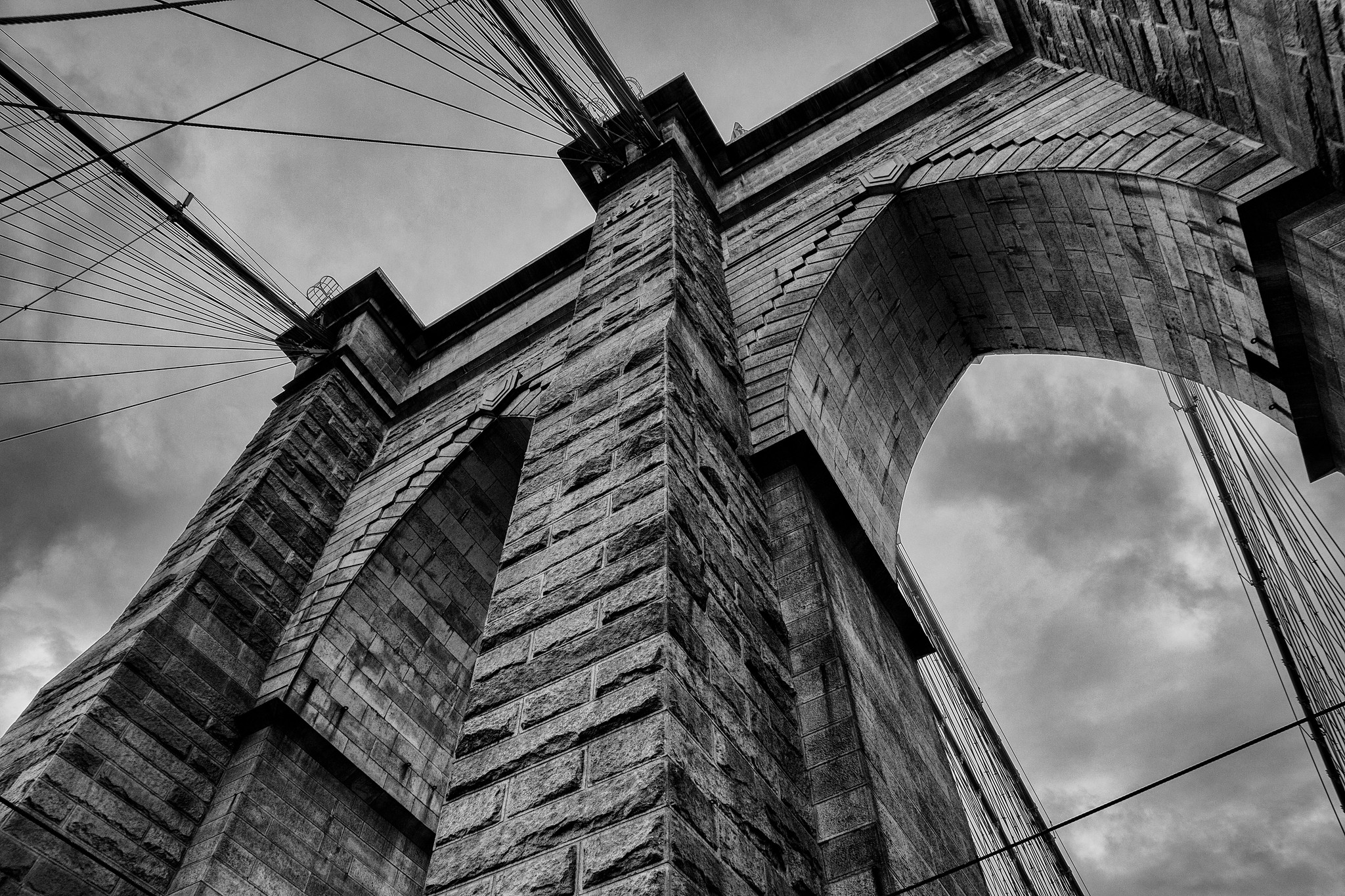
Next up it was time to meet my friend Geoff at the Beatles exhibit in the New York Public Library of Performing Arts in the Lincoln Center. The exhibit marked the fiftieth anniversary of the famous arrival of the Fab Four in New York, with hundreds of screaming girls meeting the band at the airport and going on to see them in their appearance on the Ed Sullivan Show.
After lunch it was a stroll through the park. There were protests against the attempts by New York City Mayor Bill de Blasio to get rid of the horse and carriage industry around the top of Central Park. Essentially hundreds of these carriages parade around a set route carrying tourists, but there are questions over how well the horses are treated.
As I walked past, the cart operators were protesting vociferously and a local news crew was conducting interviews on the street. One of the signs actually seemed to be wishing death on the mayor which seemed a bit extreme!
Two years on, and I see that this is still a live topic in New York City, with the carriages not yet banned. Quite why anyone would use one of these carts is beyond me. But then in London people seem to get in the equally pointless pedicabs.
[justified_image_grid preset=4 lightbox=photoswipe mobile_lightbox=photoswipe flickr_user=32306155@N00 flickr_photoset=72157663602155539]From the park it was off to visit my aunt and her very ill husband. He needed fairly constant nursing care, but despite his illness I think he appreciated my brief visit. I would spend more time with my aunt later, so I kept this visit short.
Bookshops are something that I simply find irresistible. I have to visit wherever I am in the world, even if I can’t speak the local language and the shop doesn’t really stock English language titles. I want to know what’s selling locally, and see if there are books I can chase down later (I was very aware of not over-burdening myself with heavy books at the start of a long trip, no matter how tempted).
In the US books are actually still pretty expensive. In the UK we’re used to hardbacks being released 6 to 12 months before the paperback comes out. Even the biggest blockbusters get released in paperback fairly quickly and in affordable editions, which the supermarkets and online retailers often heavily discount.
America does things differently, and a fiction title might spend two years or more being a hardback, only eventually seeing a paperback released. Stores don’t seem to discount titles that heavily, so perhaps it’s not surprising that Amazon has done well. Even when titles are discounted, as they are in places like Barnes and Noble, the prices are still much higher than in the UK. And books have sales tax applied at the till like other goods.
Then it was off to the cinema. I was a Kickstarter backer of one of the most successful ever Kickstarter campaigns – to produce a Veronica Mars movie. Although I got a digital copy as part of my reward, I was frustrated with the viewing experience. In the UK, Flixster is primarily a portal for watching trailers. While it worked on a computer or tablet, I just wanted to see the film on my TV which wasn’t easily possible. Anyway, in New York the film was showing on a big screen in Time Square, so I spent a couple of hours seeing where my money had gone!
[justified_image_grid preset=4 lightbox=photoswipe mobile_lightbox=photoswipe flickr_user=32306155@N00 flickr_photoset=72157661964499014]By the time I came out of the cinema it was tipping down with rain which is always fun for a few photos. But it was also now cold, and I’d not packed a hat. Time Square is really handy if you want to buy M&Ms, but not useful if you want something practical like a hat. Street vendors suddenly become useful, and so $5 later I’d found myself a solution.
The apartment I was renting had a TV that when I first got there picked up quite a decent selection of channels – all “basic cable” but better than nothing. But somehow I did something to the set and now basically there was no television whatsoever. I’m normally pretty good at sorting out TVs, but the way these things work in apartment blocks can be complicated. No matter how many sub-menus I went into or re-scans I tried, I’d basically messed the thing up.
At least the internet was working. Not only that but the TV had a Netflix button on it, and I noticed that somebody else had logged into their account on it. I fear I may have messed up that person’s preferences a little, although I like to think that they’ll watch a few less romcoms once my profile amendments kicked into place in Netflix’s algorithm.
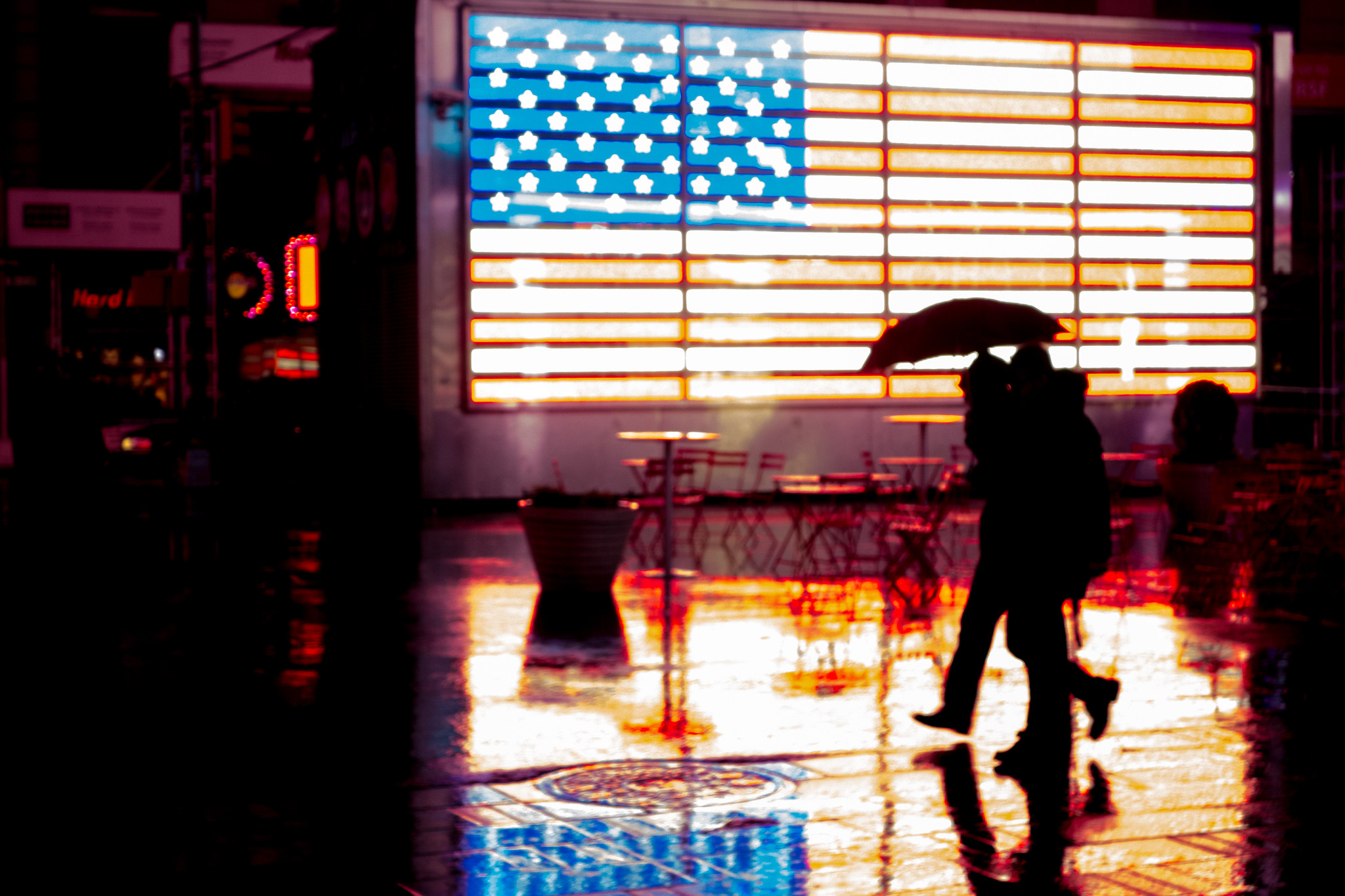
The following day I woke up to the joyous news that my ex-employer had somehow failed to pay me on the date the money was due. This was a little perturbing since that money was funding most of this trip. I had a few scary hours, but fortunately by midday, the money was safely in my account. I could relax…
After some shopping and a visit to see a Robert Capa photography exhibition I was meeting my friend Jess and getting a look around the SiriusXM studios.
Approaching the outside of the building I noticed a gaggle of photographers standing around suggesting that something was up within. SiriusXM’s studios are housed within a couple of floors of a much larger building. The reception area was large and open plan, including a large room where interviews and sessions could be held with an audience.
The place was swarming with teenage girls, all gathering for a Q&A with the cast of a new film based on a young adult book series – Divergent. A quick look on IMDB suggested that Kate Winslet was in the cast, but I couldn’t see her, and I failed to recognise any of the other names.
I’m not normally the sort of person who tries to arrange radio tours wherever I go, but I was still curious to see what SiriusXM were doing. The service offers more than 175 channels. While some of those are third party channels from providers like CNN and Bloomberg, many of the channels are originated by SiriusXM, from sports to sometimes quite niche music genres.
There were dozens of studios, each allocated to one of their numerous channels. And this wasn’t their only facility – others are in places like Nashville.
It does mean that a right-wing talk-show can sit a couple of studios down from an all-NFL-all-the-time station. And as is the way with many radio stations, there were piles of promotional merchandise strewn about everywhere.
The Howard Stern Show also comes from this building, but his suite of offices and studios was very much off limits. Stern probably single-handedly saved SiriusXM by driving subscriptions to their service when he moved to satellite in 2004 taking home an astronomical pay-check. I note that he has recently extended his deal for several more years, but it’ll be interesting to see how SiriusXM fares in the medium to longer term as internet options develop. SiriusXM is heavily reliant on in-car listening, particularly within commercial vehicles. That might help them keep internet services at bay, since outside cities, mobile coverage can be patchy while satellite reception is clear. It’ll be interesting to see how the service develops over time.
Outside I headed into the traffic and used my first Citi bike. These hire bikes are identical to the ones used in London – both manufactured by the same Canadian company. New York seems to be tolerating an increased number of cyclists on its roads, but I wouldn’t put it much stronger than that. I didn’t feel unsafe however.
I’d managed to cycle half-way up Central Park before I realised that the cycle hire scheme stopped at the southern foot of the park, so it became a bit of a dash to get the bike parked up somewhere within the requisite 30 minutes free hire time. Then when the bike failed to dock properly, I had to speak to a lady on the helpline to get things sorted out.

New York City is always full of film shoots, having a popular tax credit scheme to encourage productions to come to the city. And while London is fairly full of TV and film productions at any given point, it’s all done with code. You’ll see curious luminous arrows attached to street signs with letters like “LOC” indicating that catering trucks and so on should head that way. If you want to actually know what’s being filmed then you have to ask a security guard or find a helpful crew member.
In New York, it’s a bit simpler. Each production gets a licence and they post those licences on street furniture where parking spaces have been reserved for production vehicles. So the nosey – like me – can quickly see what is being shot.
March is “pilot season” in US TV, when networks order one-off productions to determine whether they like what they see enough to send the production to series. “Dangerous Liaisons” was one such production starring Katie Holmes and Rufus Sewell. That was only a working title, and quite how it related to either the Laclos novel or Christopher Hampton’s play wasn’t clear. Either way, the fact that you’ve never heard of the series will point to the fact that the series was not ordered, and the pilot will probably never be seen, such is the expensive way that US networks make decisions over what shows they make.
Another series, The Following, was entering its second season and production was underway just a couple of blocks away. But none of the action seemed to be on the streets, so despite nosing around I headed on.
The next morning, I remembered that my Airbnb host had mentioned the views from the roof of my building, so I gingerly headed up the stairwell until I pushed open a fire door and exited onto the roof. Was this allowed? It was large roof and mostly flat, with some washing fluttering in the breeze. People obviously did come up here.
The views were wonderful.
When I exited the building’s front door I found myself stumbling straight into another film shoot that seemed to be using the shop on the corner of my block. And a little later I came across yet another production – this time the Jonny Lee Miller version of Sherlock Holmes, Elementary. Again no sign of the stars, although I did spot Lucy Liu’s trailer!
I’d arranged to meet Geoff again – we were going to see a film about the discovery of the Higgs-Boson called Particle Fever. But I was late. I’d been exploring Williamsburg a little before heading back across to Manhattan. Now I would have to see how fast I could make it down the island on a bike – racing from 59th St to 12th St. It was a good ride and I made it in time.
Now I’m not one who is normally unable to finish his meal, but the pizza I got that evening was ridiculously large. It was hopeless – I don’t think I got through half of it. It’s easy to make jokes about food portion sizes, but this was ridiculous.
But I wasn’t saving it for later because the next day it was off to the airport. I was heading south.
[justified_image_grid preset=4 lightbox=photoswipe mobile_lightbox=photoswipe flickr_user=32306155@N00 flickr_photoset=72157663723855730]New York to Miami
At the airport the next morning I checked my bag and travelled through to security. I’d heard nothing but bad things about the American TSA, but I have to say that it was all pretty flawless. No queue, and quite straightforward getting luggage through the x-ray and scanning devices. One of the TSA guys even chatted about my surname – the usual:
“Are you related to…?”
“Sadly no. He made his name up as there was already a David Jones – in The Monkees.”
“Oh yes! Do you pronounce it Bow-ee or Bo’-ee?”
American Airlines has complicated check-in service that is based around who you are, what ticket you bought, which priority scheme you may or may not be a member of, do you have infants, are you in the armed forces (“God bless our troops” all over the airport. Not sure what that means for secular members of the forces), what your membership is with affiliated loyalty schemes and airlines, and which check-in group you’re in, all based, I think, on when you actually completed your check-in.
Anyway, I got a decent sized window seat, and more importantly, the person in front neglected to recline their seat. Consequently, it was actually more comfortable than my Premium Economy trip from London.
I was also surprised that AA is still handing out free non-alcoholic drinks. Allied with the massive size of allowed carry-on luggage, I think the American traveller is still way better off than anyone who flies with budget airlines like Ryanair. Although I should note that I’ve not flown with the likes of JetBlue or Southwest.
There was a short delay but the flight was uneventful. At the other end it was a long walk to the remote rental car collection point where I made the rookie error of being upsold a full tank of gas. Still it meant that I needn’t bring the car back full at the other end.
I was allocated a Dodge Avenger which seemed perfectly good. It came with a black racing stripe! It was nice and spacious and looked like it would see me comfortably around Florida and beyond. But it did actually take me several minutes to work out how to even get the seat to move back so I could actually get into the car! Then it I had to work out how to unlock the boot and other doors, before reminding myself about how an automatic worked.
I was going to be relying on Google Maps for this trip so I punched the details of the hotel into my phone and hit the navigate button.
I was heading for Miami Beach – specifically South Beach!
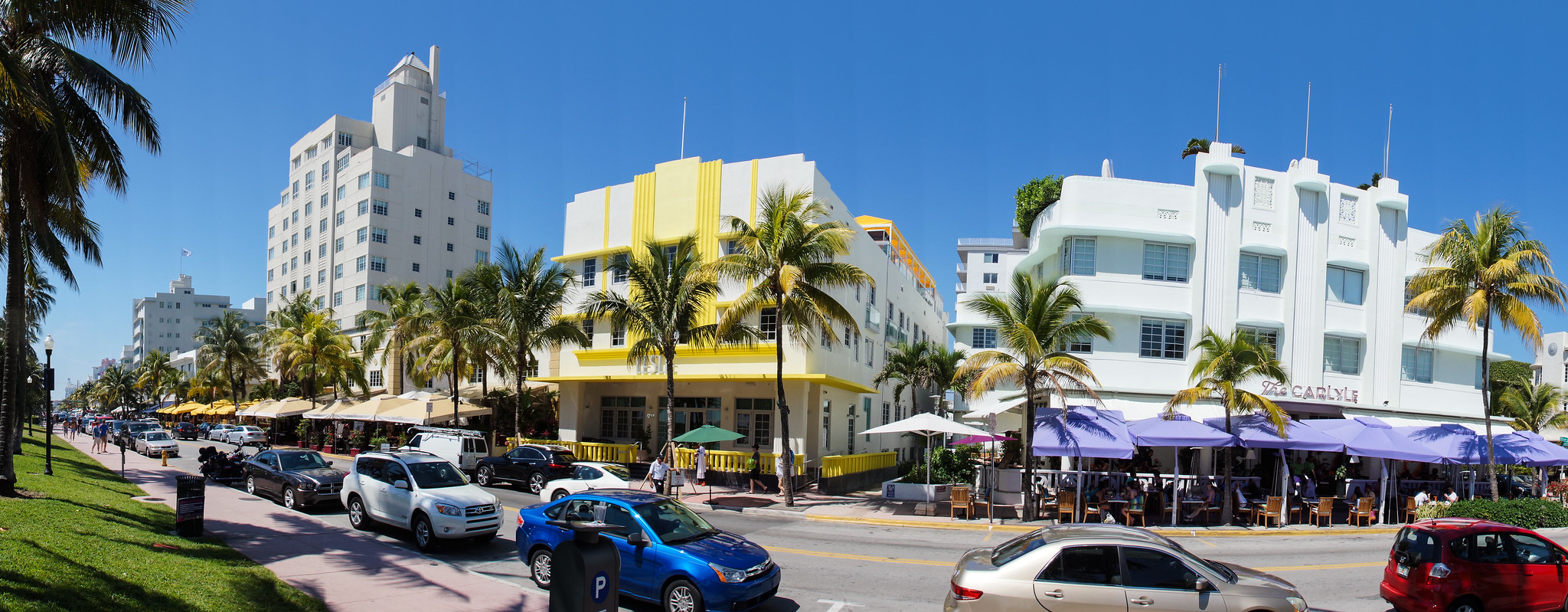
I must admit that I was surprised when the phone almost immediately directed me away from the main roads and the route that the rest of the airport traffic was taking. Suddenly I was on some very quiet and often residential streets. Where on earth was Google Maps taking me? I was annoyed with myself that I’d hurried away from the rental garage without looking in detail at the whole route.
I couldn’t understand why such a back route was the preferred way of getting to a very popular tourist destination. Surely the roads should be bigger? I was expecting highways nearly all the way.
Then I began to notice that Miami seemed to have an awful lot of cycle lanes. They were everywhere. Given the number, you’d think that Florida was a cycling paradise.
Then it clicked.
My default travelling mode on Google Maps was “cycling” and I’d not changed it. In the UK, I don’t own a car, so tend to rely mostly on cycling or walking routes when navigating. I was now actually following a cycle route from Miami International to South Beach!
The route was certainly quieter than normal, and it afforded me the chance to re-learn that in the US you can turn right on red if there are no pedestrians crossing. I wasn’t sure if this was a state by state rule, but a policeman waved me around one corner quite furiously when it didn’t look like I was making the turn.
Fortunately there was road access the whole way, and soon enough I was crossing a small toll-road onto the barrier island that is Miami Beach, where it turned out that if you arrive on a Saturday afternoon in downtown South Beach, in the middle of Spring Break, then there is going to be a lot of traffic.
It was rammed!
I could sort of see where I wanted to get to, and there was an empty valet parking desk. But I had to circle the block at least three times before I eventually parked in a disabled spot in a car park and accosted the valet parking guy for the hotel I was staying in.
I’ve not idea where he puts the cars, but he found me a space and surrounded by traffic, I had to parallel park the enormous car I’d rented. Bear in mind that at this stage, I was still learning how light the touch was on the accelerator.
Somehow I managed, flustered, to get parked up, and found the little hotel I’d booked at not inconsiderable expense. The Impala Hotel is a lovely boutique hotel, of which there are lot in Miami alongside the much larger buildings along the coast.
The room I had was gorgeous, and I’d later learn that sometime Miami resident Gianni Versace had given the hotel the decorative tilework they had in the lobby. It seemed that he often ate at the attached Italian restaurant where I later had a lovely pasta meal that evening.
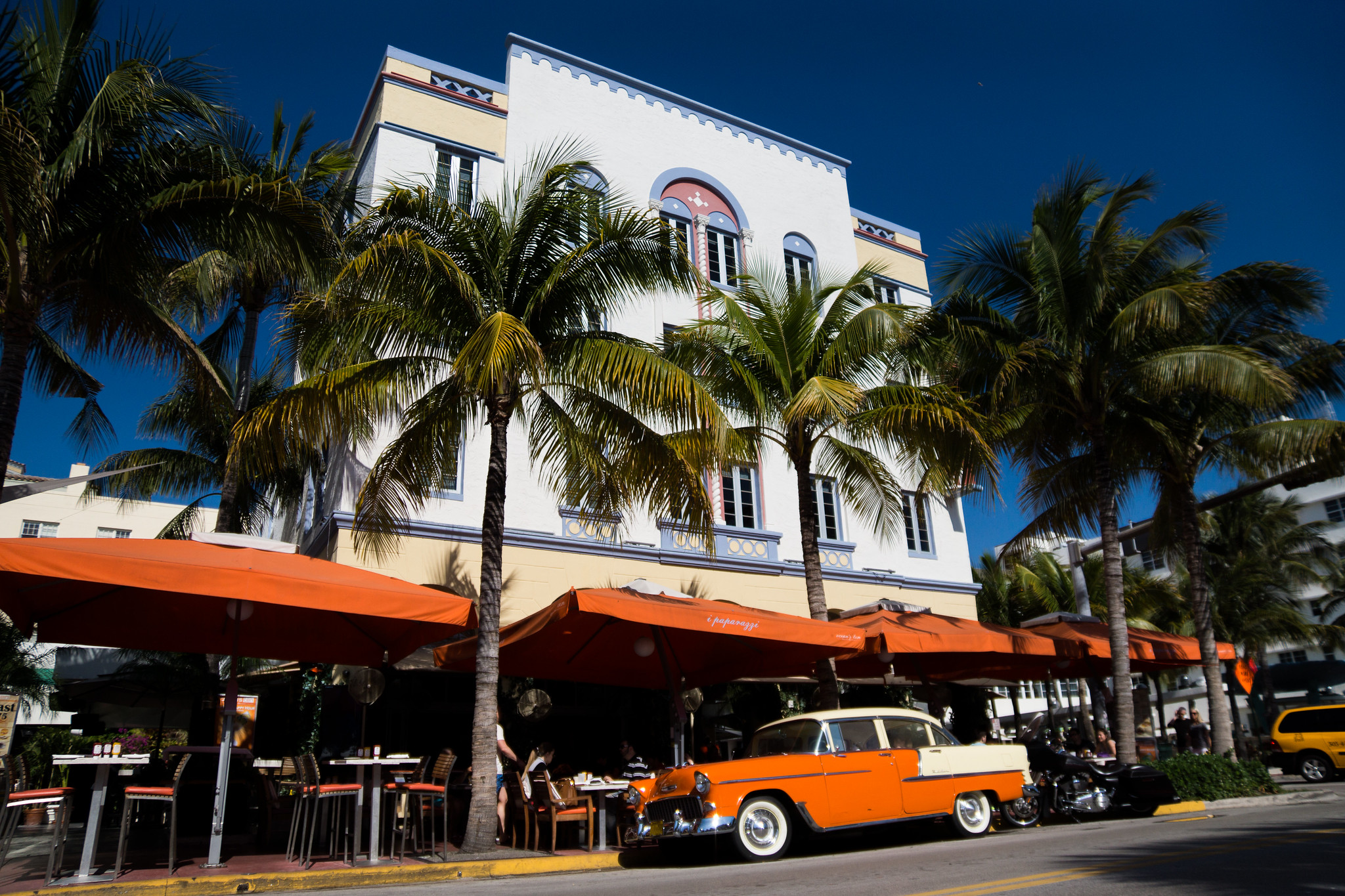
What can you say about South Beach?
I’ve not been to Ibiza, but I’d hazard a guess that it’s a lot like this – but with much less art deco.
The main drag is Ocean Drive, a crazy mix of bars, art deco buildings, shops selling thong bikinis, beautiful people, music, cars, drinking from plastic cups and parading up and down the strip.
Beyond Ocean Drive is the beach itself, a wide strip of white sand running miles in either direction. While there were thousands of people in the bars and on the streets, thousands more were on the beach. A remarkable place.
On Sunday morning I went on an official guided walk of Miami’s art deco buildings. The British guide had lived here a long time and was very good and informative, taking us into a number of lobbies, bars and restaurants to point things out and tell us stories of Miami in the thirties.
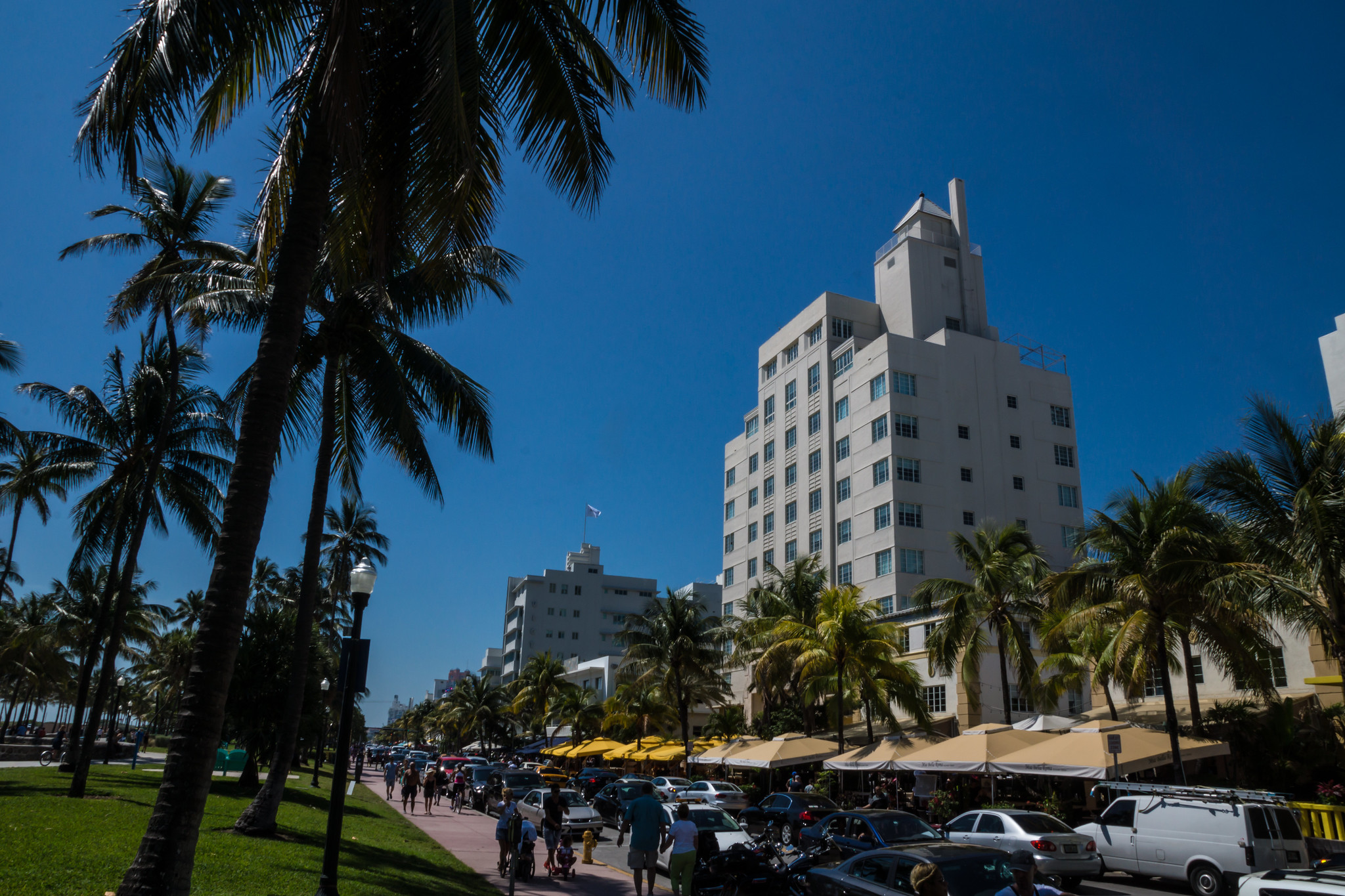
What I hadn’t previously appreciated was the importance of the TV series, Miami Vice, in leading a revival of the whole of South Beach. While it the whole Miami Beach island had originally been built as a tourist destination from the start of the twentieth century, by the eighties it was run down and long past its heyday before Michael Mann and crew gave it cool new lick of vivid pink paint (not literally – at least I don’t think so). Since then, the area has thrived once more.
[justified_image_grid preset=4 lightbox=photoswipe mobile_lightbox=photoswipe flickr_user=32306155@N00 flickr_photoset=72157664247533526]The Wolfsonian is an art and design museum housed in an old warehouse towards one end of the art-deco district. The collection is really rather good, and not just limited to art-deco. It included, incidentally, perhaps the most gorgeous – and largest – radio I’ve ever seen.
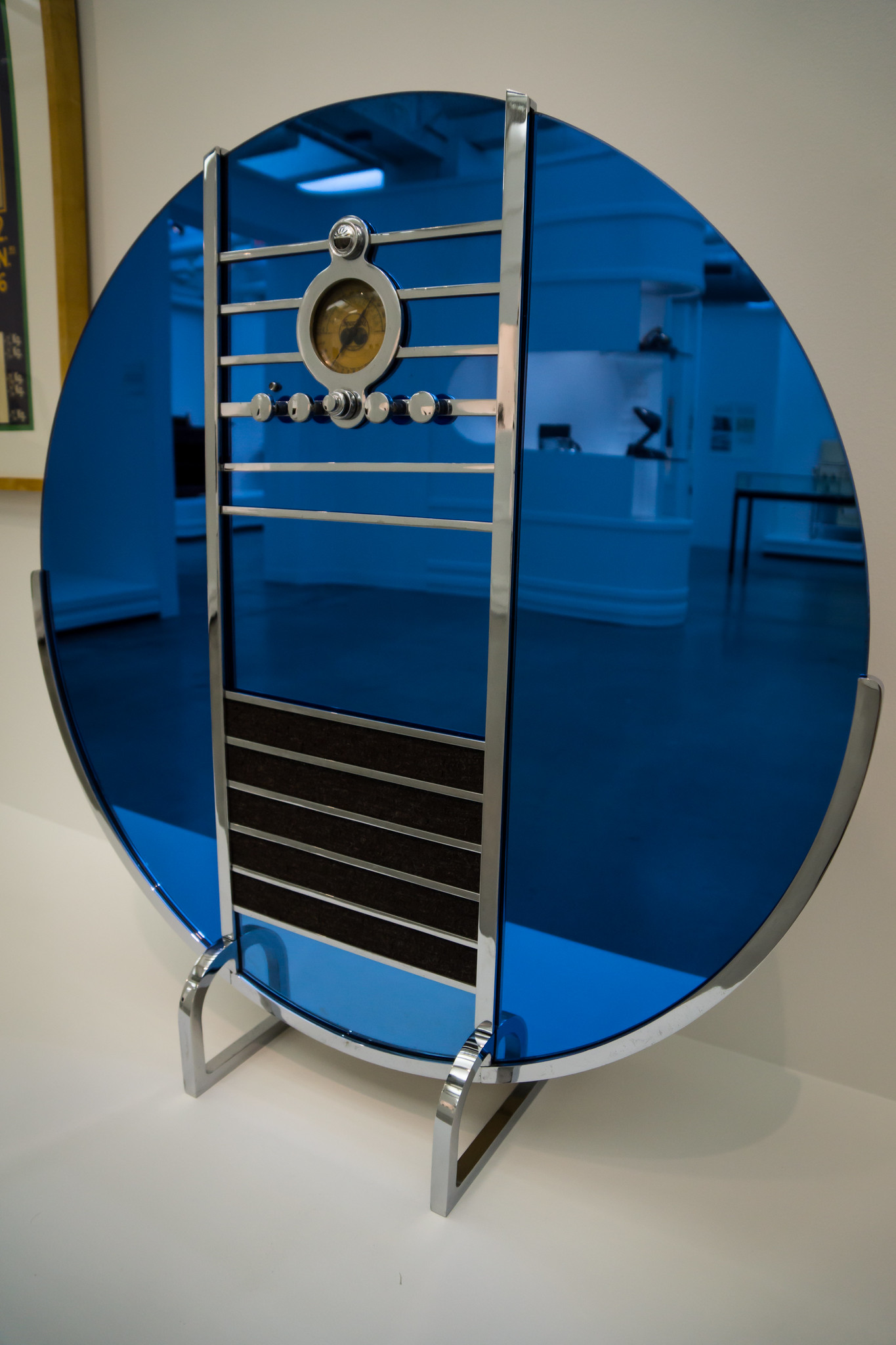
I’d brought a kite along with me for my trip with the aim to take some aerial photos and video from a camera slung beneath it in a rig – a special device that will hold a camera. There was a decent wind up during the afternoon, so it looked good for giving it a go.
I got a few admiring glances when people realised I’d got a camera in the air, and a fellow kite enthusiast came over to discuss things. He told me he’d lost a kite the previous day on the end of a 2000 foot line! He’d been to a store and bought a new one by the time I saw him.
Now 2000 feet is awful lot of kite line – my kite’s line was about 600 feet by way of comparison. The big problem with really long lines is that reeling them in can take an awfully long time. My new companion had a solution to this, and he demonstrated it when he whipped a power drill out of his backpack. He’d adapted his kite winder to take a drill bit, and was thus able to draw the line back in remarkably fast as then demonstrated!
It seemed poor form not to spend some time on the beach, but I’d not actually packed a bathing suit. So I bought some overpriced swimming shorts and a pair of flip-flops and hit the beach where it’d be fair to say there was almost as much silicon on display on some people as there was in sand. But the water was lovely, and the hotel had provided a beach bag and towel which was a nice touch.
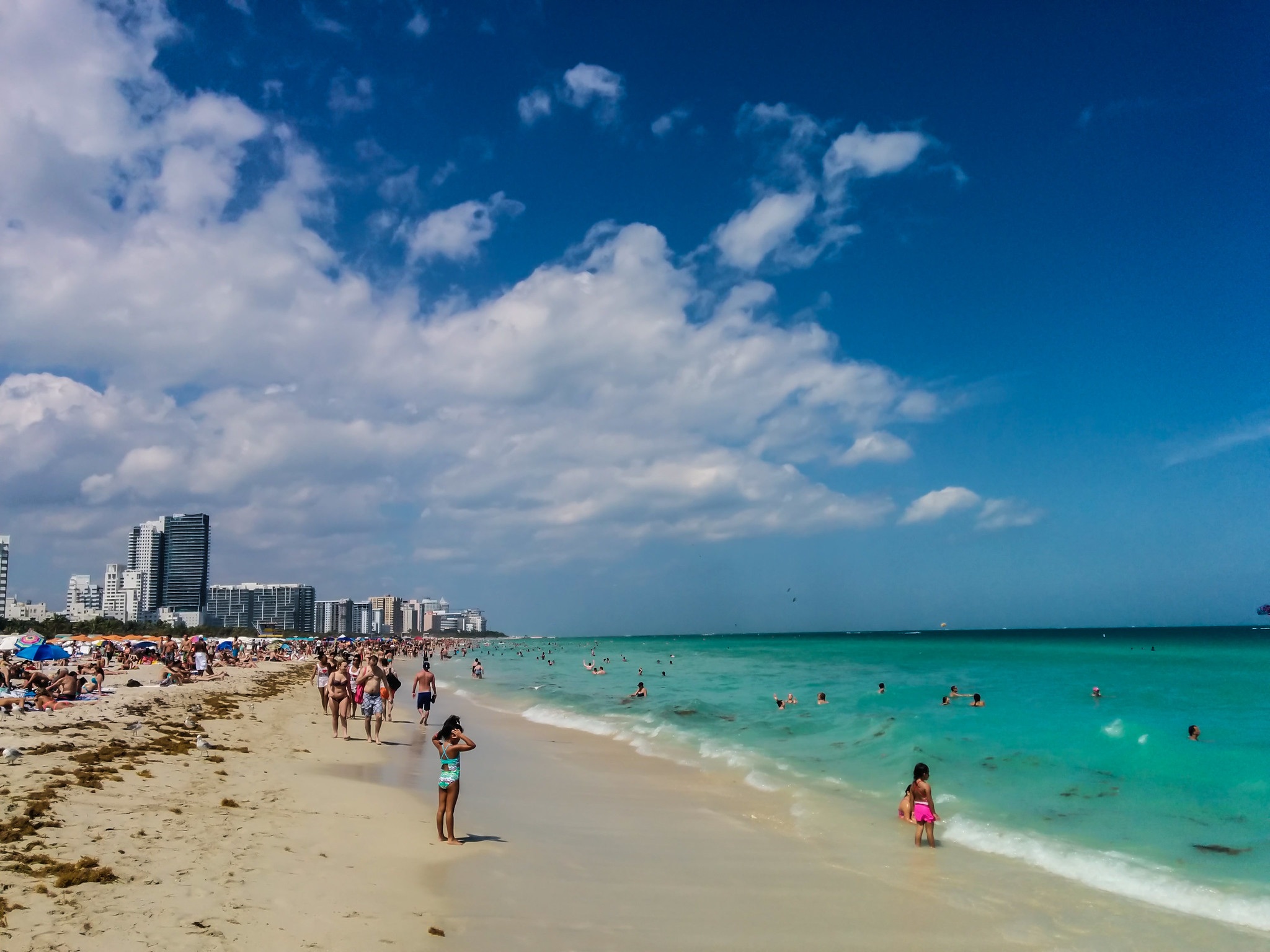
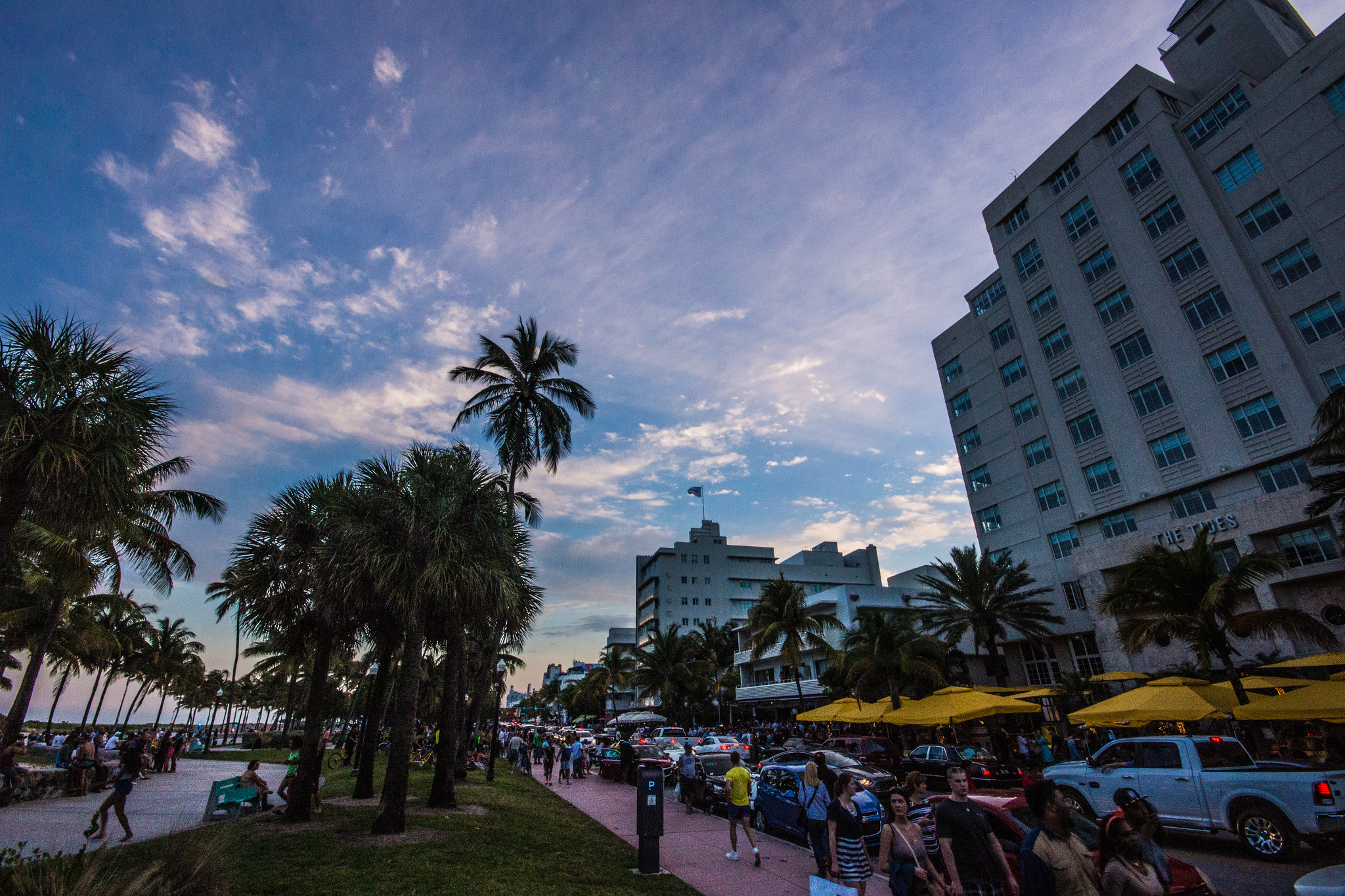
One thing that was brought into focus a bit in Miami was America and its attitude towards alcohol. On the one hand it can seem to be very liberal – dependent on state and county laws, you may find places selling liquor everywhere. On the other hand, you have to be over 21, which in practice means that you have to keep your driving licence about your person for proof of age.
And you simply can’t have alcohol on show if you buy it from a store. It has to be “bagged.” I bought a couple of bottles of beer in one store, and they insisted on putting each of them in individual brown paper bags, which were then placed in a plastic bag. That seemed to produce an awful lot of waste.
Clearly Miami is full of mostly young people getting very very drunk in bars, clubs and parties. Yet it does sometimes feel that there is no middle ground between being either teetotal or an alcoholic. But then this is a country which did completely outlaw alcohol for a period, and still has plenty of “dry” counties.

I picked up a copy of the Miami Herald, and realised that it was a bit of a hollow shell of what it once was. It was strangely thin and tall, and nowhere near as good as the New York Times. Still it was full of news of David Beckham trying to get a Major League Soccer team up and running in the area. He wanted to build a new stadium in downtown, but it seemed that despite the sparkle that the Beckham brand brings to things, it wasn’t certain that he’d be getting his own way. Since then, the plans have changed, but it sounds as though there’s still a Miami “franchise” (aka “team” in European parlance) in the offing.

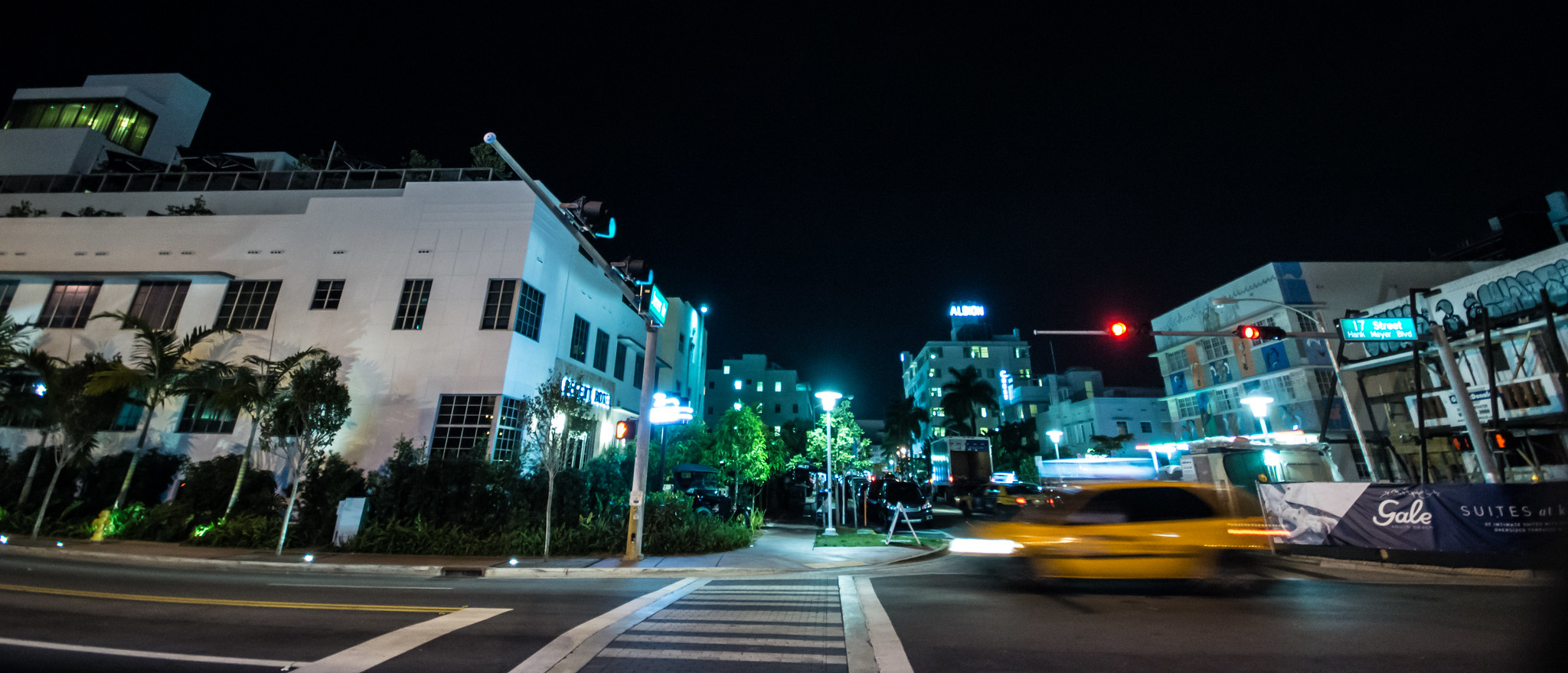
US TV no longer really surprises us, since much of it makes its way across the Atlantic and around the world. We can see US news channels – or quasi-news channels – and the culture is much more shareable in an internet age. But one thing the US that nobody else has – apart from New Zealand curiously – is TV advertising for prescription drugs.
$4.5 billion a year is spent on advertising prescription drugs in the US, and TV is full of often long ads promoting everything from male impotence brands to arthritis relief.
The problems with this advertising are many: patients bother their doctors to switch to brands they’ve seen advertised even when others have greater efficacy; drug prices increase enormously to accommodate massive marketing budgets; pharmaceutical groups concentrate on introducing drugs that alleviate conditions based on what will sell rather than what the public actually needs.
The ads themselves are extraordinary. Typically they’re shot in a very saccharin style, somehow depicting a white middle-class family (everyone in the US is middle-class it seems) and their comfortable home. They’re happy because they’re taking this drug and it has solved all their problems!
But… There’s a big but. The second half of the ad will typically then list the catastrophic side-effects that some patients may suffer. These can be pretty awful, although the light and upbeat voice mightn’t make that clear. The phrase “risk of death,” does bring it home somehow. It’s a curious state of affairs.
Finally the ad will end with, “Talk to your doctor about ACME drug.” Because you, as a TV viewer, have a much better idea of what to take after you saw an ad in the middle of Law & Order: SVU, than your doctor who spent years in medical school does!
Here is a partial transcript from a genuine advertisement that I saw on TV for a drug called Lyrica. I’m sure it’s a very fine drug. But I’m just not at all sure that advertising it on TV is actually helpful.
The ad concerns Michael, a former pro golfer who has been diagnosed with diabetic nerve pain. The total runtime of ad is 1:15 and for the first xx seconds, Michael describes his unpleasant sounding symptoms while a voiceover explained how Lyrica is able to help. Then at 28 seconds in, the script continues:
“Lyrica is not for everyone.
“It may cause serious allergic reactions or suicidal thoughts or actions.
“Tell your doctor right away if you have these, new or worsening depression, or unusual changes in mood or behaviour. Or swelling, trouble breathing, rash, hives, blisters, changes in eyesight including blurry vision, muscle pain with fever, tired feeling, or skin sores from diabetes.
“Common side effects are dizziness, sleepiness, weight gain and swelling of hands, legs and feet. Don’t drink alcohol while taking Lyrica. Don’t drive or use machinery until you know how Lyrica affects you.
“Those who have had a drug or alcohol problem may be more likely to misuse Lyrica.”
Then, having shown as footage of Michael playing golf while tinkly piano music played, Michael reminded us how the drug and changed his life.
I meanwhile was crawling under my bed at the thought that a doctor might ever prescribe me with the drug!
